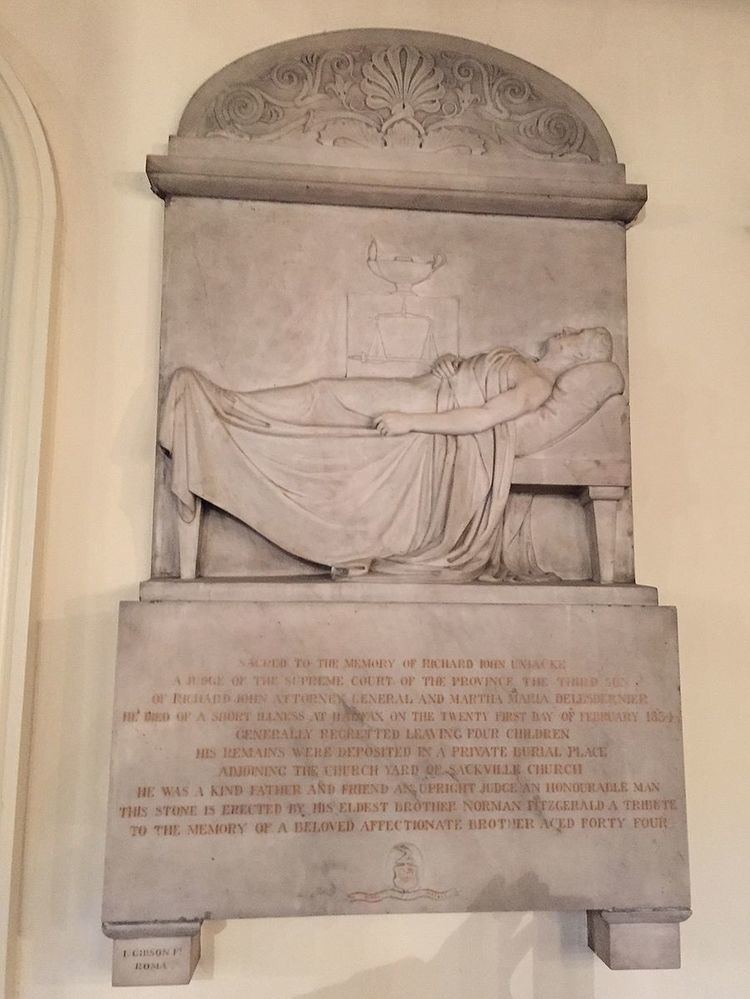Country Canada Churchmanship Low church Opened 2 September 1750 Phone +1 902-429-2240 Architectural type Georgian architecture | Denomination Anglican Website Official site Province Nova Scotia Architectural style Georgian architecture Architect James Gibbs | |
 | ||
Location 1749 Argyle Street
Halifax, Nova Scotia
B3J 3K4 Founded 13 June 1750 (1750-06-13) Address 1749 Argyle St, Halifax, NS B3J 3K4, Canada Similar St Mary's Basilica, Halifax Town Clock, Province House, Grand Parade, Citadel Hill | ||
St. Paul's Church is an evangelical Anglican church in downtown Halifax, Nova Scotia, within the Diocese of Nova Scotia and Prince Edward Island of the Anglican Church of Canada. It is located at the south end of the Grand Parade, an open square in downtown Halifax with Halifax City Hall at the northern end. Built during Father Le Loutre's War, it is the oldest surviving Protestant church in Canada and the oldest building in Halifax. There is also a crypt below the church and the St. Paul's Church Cemetery. The official chapel of the church was the Little Dutch (Deutsch) Church.
Contents
Saint Paul's was designated a National Historic Site of Canada in 1981. In 1981, it was designated a Municipal Registered Heritage Property by the former City of Halifax, and in 1983 it was designated a Provincially Registered Heritage Property both under the provincial Heritage Property Act.
History
It was founded in 1749 (the same year as the Halifax colony). The construction was begun in 1750 and is based on the ground plan of Gibbs' Marybone Chapel (later St. Peter's, Vere Street) in London, with later additions such as a larger tower. Reverend William Tutty (1715-1754) opened the church on September 2, 1750. Rev William Tutty was the first minister (1750–54); followed by Rev John Breynton (1754-1791) and Rev. Thomas Wood (reverend) (1751-1764), who served at the same time. The church also served as the site for the initial congregation of St. Matthew's United Church (Halifax) until this church was built.
During the French and Indian War (the North American theatre of the Seven Years' War), the church was the site of the burials of two prominent Nova Scotians: Governor Charles Lawrence. (d.1760) and Catholic Priest Pierre Maillard, the latter ceremony was attended by a large number of Mi'kmaq people. (Also during the war, the church was where Horatio Gates married Elizabeth Phillips in 1754.) Soon after the war, Vice-Admiral Philip Durell (d. 1766) was buried after having participated in the Siege of Louisbourg (1758) and the Siege of Quebec (1759).
During the American Revolution the church held burial ceremonies for Francis McLean (d. 1781) who defended New Ireland (Maine) during the war; Capt Henry Francis Evans (d.1781) who died in the Naval Battle off Cape Breton (1781); Baron Oberst Franz Carl Erdmann von Seitz Hatchment (d.1782) who was the commander of the Hessian soldiers that defended Lunenburg in the Raid on Lunenburg (1782); and Governor Michael Francklin (d. 1782), whose funeral was also attended by a large number of Mi'kmaq people.
After the American Revolution, with the creation of the Diocese of Nova Scotia in 1787, St. Paul's was given the Bishop's seat, making it the first Anglican cathedral outside of Great Britain. It served as the cathedral from 1787-1864. The diocese included Nova Scotia, New Brunswick, Newfoundland, St. Johns (now Prince Edward Island), and across Quebec and Ontario to Windsor, and Bermuda. For many decades it was one of the only places of worship in Halifax, and other denominations would thus hold services in the building.
The most valuable art in the Church is the monument of Richard John Uniacke, Jr. by John Gibson, Via Fontanella Studio, Roma, c. 1830.
During the Halifax Explosion of 1917, a piece of wooden window frame from another building was lodged into the wall of St. Paul's Church, where it remains today.
Ministers (1749-1824)
The Crypt and Commemorations
The crypt contains the remains of 20 congregants which are listed below. Also indicated below are those that have been commemorated in the church through a plaque, a hatchment or a window.
